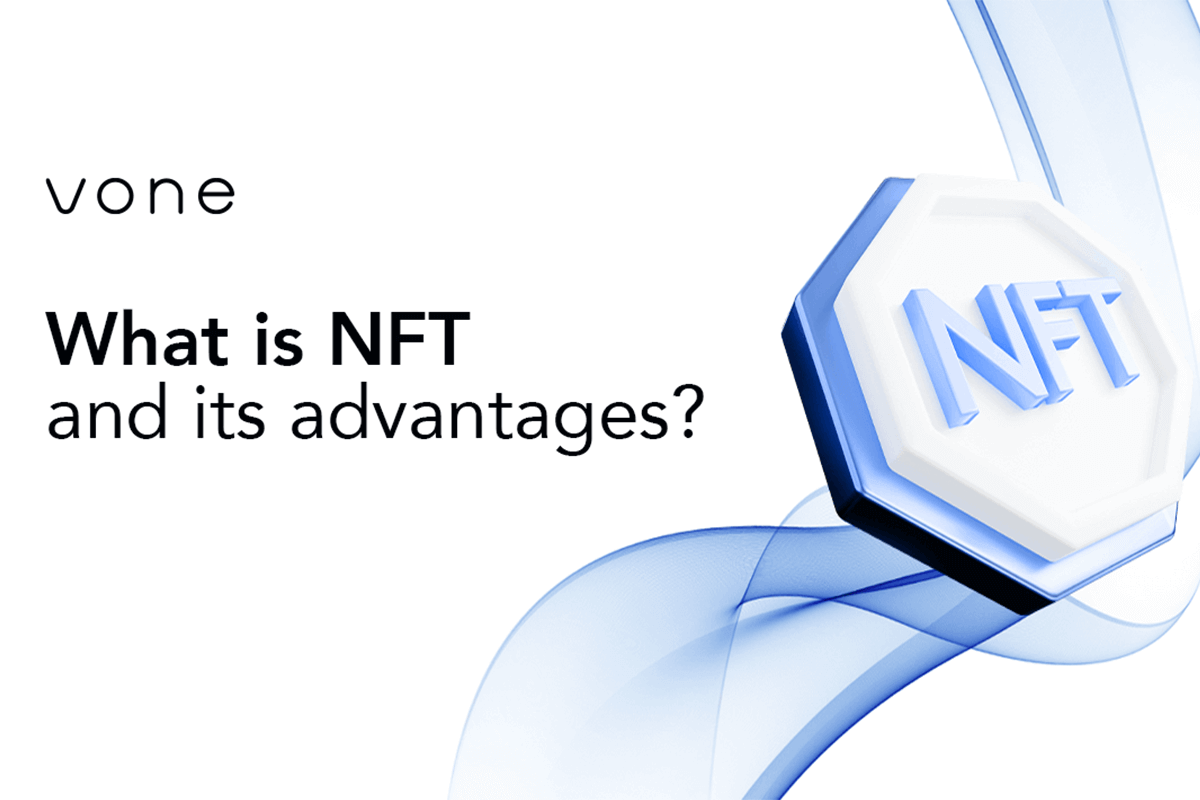What is NFT and Its Advantages?

The NFTs (non-tangible tokens) have revolutionized the way we interact with digital assets. This market is evolving quite rapidly and has an immense potential for widespread impact. The NFT sales reached $69 million in 2021.
Did you know that the first non-tangible token sold is known as "Quantum"? Kevin McKoy designed and tokenized it in 2014 on the Namecoin blockchain.
So, what is NFT (or non-fungible token)? It refers to a unique digital asset that is represented and stored on a blockchain. Do you want to learn more?
In this article, you can explore further details about "What are NFTs and how do they work?", and dig deeper into key advantages of non-fungible tokens.
What are NFTs and how do they work?
The NFT is a unit of data that is stored on the blockchain. It’s a representation of a real asset, for instance, paintings, music files, and a lot more. These non-tangible tokens have certificates of authenticity and ownership of a particular asset.
The creators issue non-fungible tokens on a blockchain network. They decide how many NFTs to create and can sell them on a marketplace to make a profit. Moreover, those who buy NFTs also have the opportunity of reselling them.
The NFT creation process is known as minting, in which the following happens: a) the encryption of the asset’s information and b) recording it on a blockchain network.
That’s to say, during minting a new block is created, the NFT information is validated and then, the block is closed. Furthermore, smart contracts are incorporated for assigning ownership and managing transfers of non-tangible tokens.
When tokens are minted, each of them has a unique identifier, connected to one blockchain address. All the tokens have their owners, and all the ownership-related information is publicly available, providing enhanced transparency.
Key advantages
The NFTs have a wide variety of benefits, ranging from proof of ownership, and authenticity to transparency and accessibility.
Ownership
When the NFT is created, the digital asset’s key attributes and the ownership-related details are recorded on the blockchain network, offering an unchangeable record of ownership. In this case, no centralized authority is needed for the ownership verification, as the system is decentralized. It ensures state-of-the-art security, preventing fake NFTs or frauds.
Authenticity
An essential benefit of the NFT is its authenticity, as every non-fungible token has a unique and verifiable identifier on the blockchain network. This is especially important for artists, as forgeries may cause serious problems. So, the unchangeable nature of the blockchain-based non-fungible tokens means that no one can modify or replace anything.
Economic opportunity
When creators sell their NFTs, they make a profit. If buyers resell these tokens, the NFT creators get royalties through smart contracts linked to non-fungible tokens. So, NFTs may serve as a source of ongoing income for original creators.
Transparency
The blockchain network contains the records of each NFT transaction. Since blockchain technology is an immutable and open ledger, essential information, such as transaction date, sale amount, etc. is available to the public. This provides an increased level of transparency and trust, making the manipulation of recorded data on the blockchain simply impossible.
Accessibility
Non-tangible tokens may be traded and transferred quite easily. The NFT market has a global reach and investing is possible for any person who has a computer or smartphone, and an Internet connection. That's why, many investors have the opportunity to take part in the digital asset market, which improves accessibility.
Scarcity
NFTs focus on the factor of scarcity, by offering a secure and unchangeable record of ownership, improving the perceived value of a digital asset. Therefore, the NFT creators can determine the number of tokens that represent their work, strengthening the sense of exclusivity.
Examples of NFTs
The earliest NFT market was mostly concentrated on digital art and collectibles, but it has expanded significantly, embracing various areas. Today the NFT can be anything, from event tickets to media files and digital fashion items.
The examples of NFTs are diverse, here are some of them:
- The NFTs can be numbers. Vone - the revolutionary Web3 communication platform enables its users to select a unique and exclusive Blockchain ID, also known as Vone Numbers, to interact within the Vone ecosystem. It’s an individualized and unique NFT, providing security and authenticity of the users' identities worldwide.
- Game-related characters and items can be tokenized as NFTs, for example, a well-known use of NFTs is associated with "cryptokittens" which are the digital representations of cats based on Ethereum’s blockchain. Each of them has a unique identifier and comes with a different price.
- Artists often tokenize their artwork as non-fungible tokens on digital platforms, like OpenSea or Rarible.
- The NFT market is becoming popular among musicians. They use NFTs to tokenize their music and encourage interactions with their fans.
- NFTs may represent the ownership of virtual land, where users can buy and sell NFTs within the digital environment.
Key Takeaways
- What is a non-fungible token? The non-fungible tokens or NFTs refer to units of data stored on the blockchain, representing a real asset, such as artwork, music files, etc.
- The advantages of NFTs are numerous, including authenticity and ownership, new revenue streams for creators, transparency, and accessibility.
- NFTs are associated with a transformative era, finding applications in different industries through the power of blockchain technology, such as virtual real estate, digital art, gaming, and so on. Finally, it’s a valuable opportunity for investors to maximize their income.










